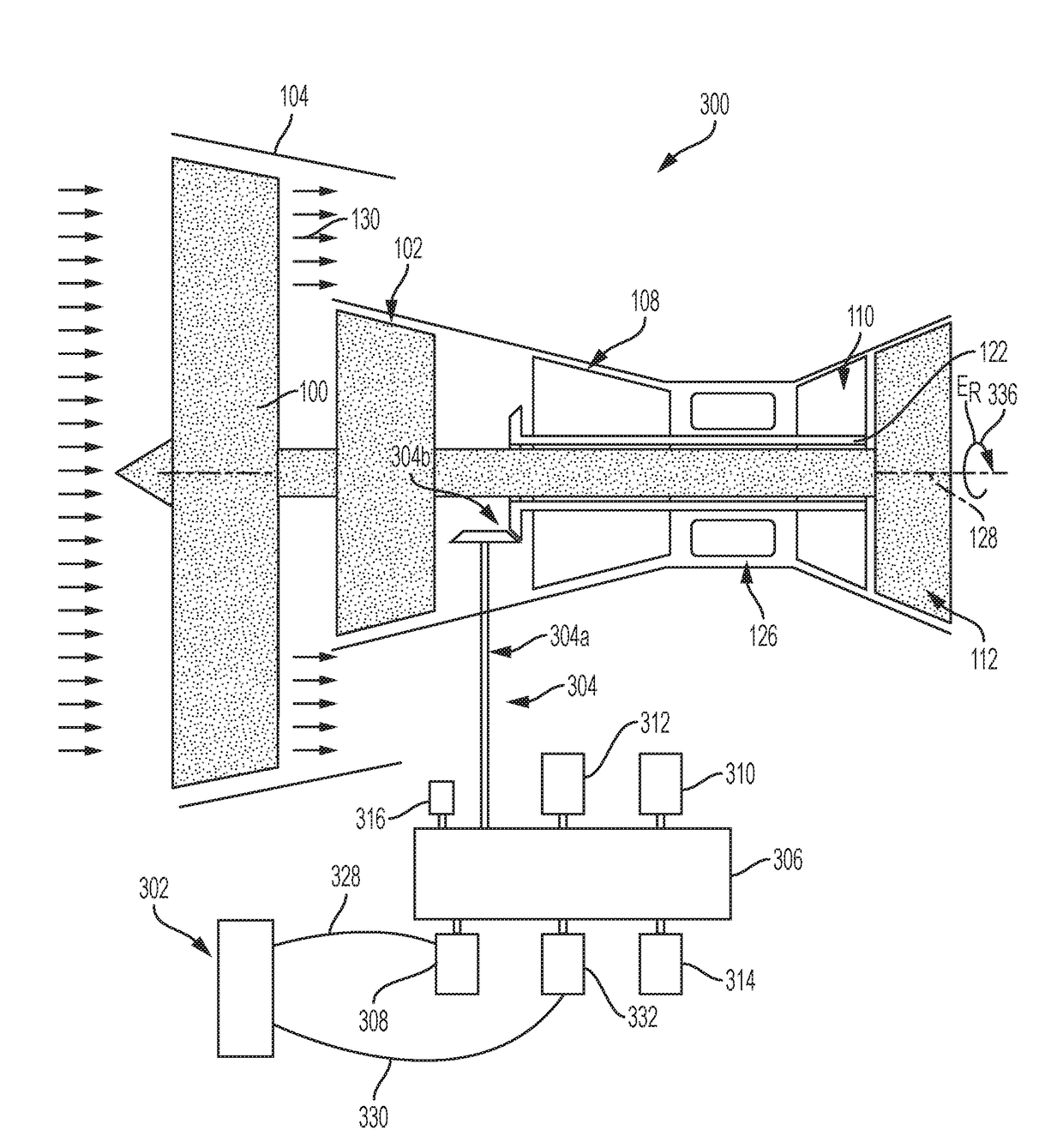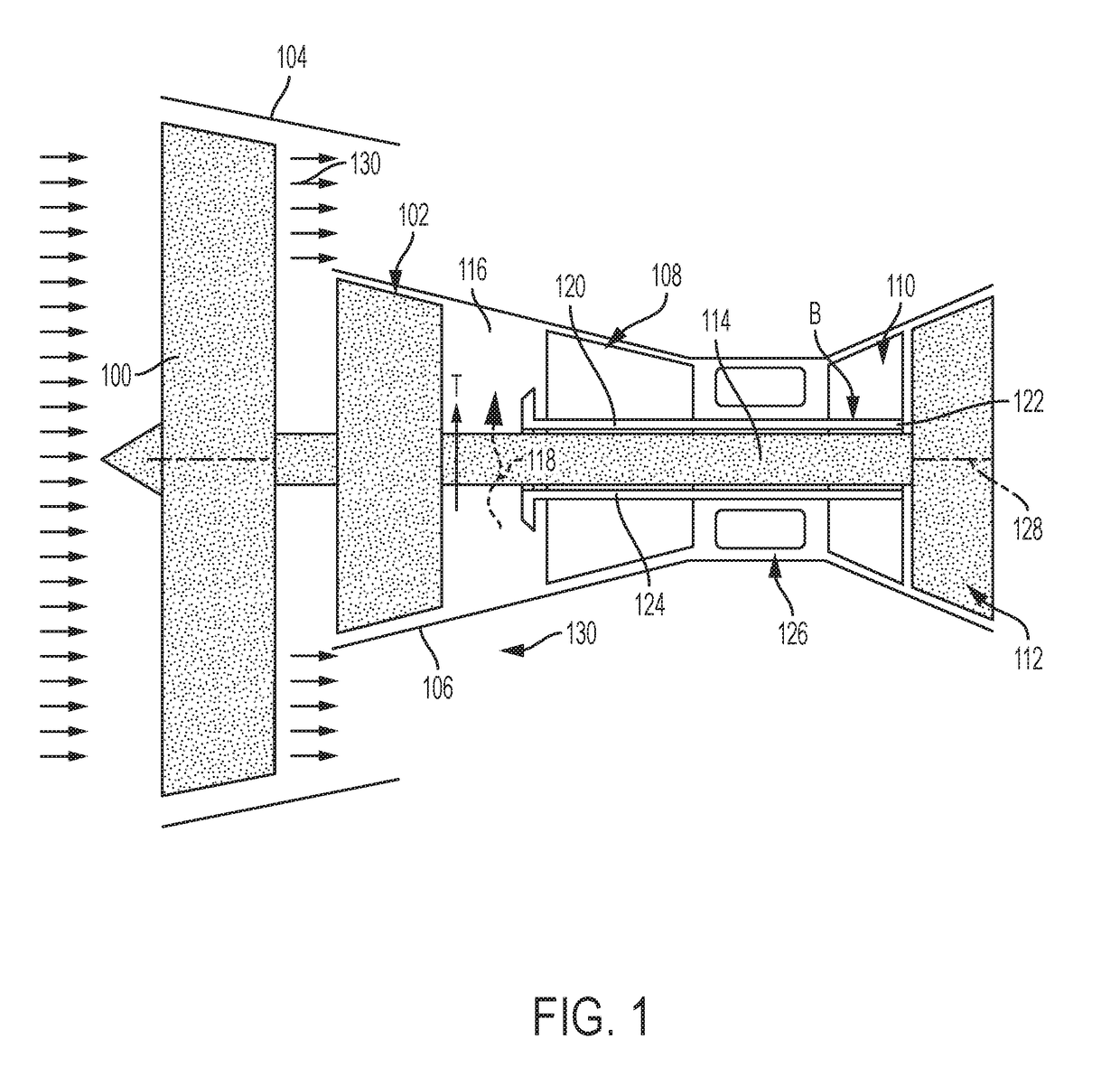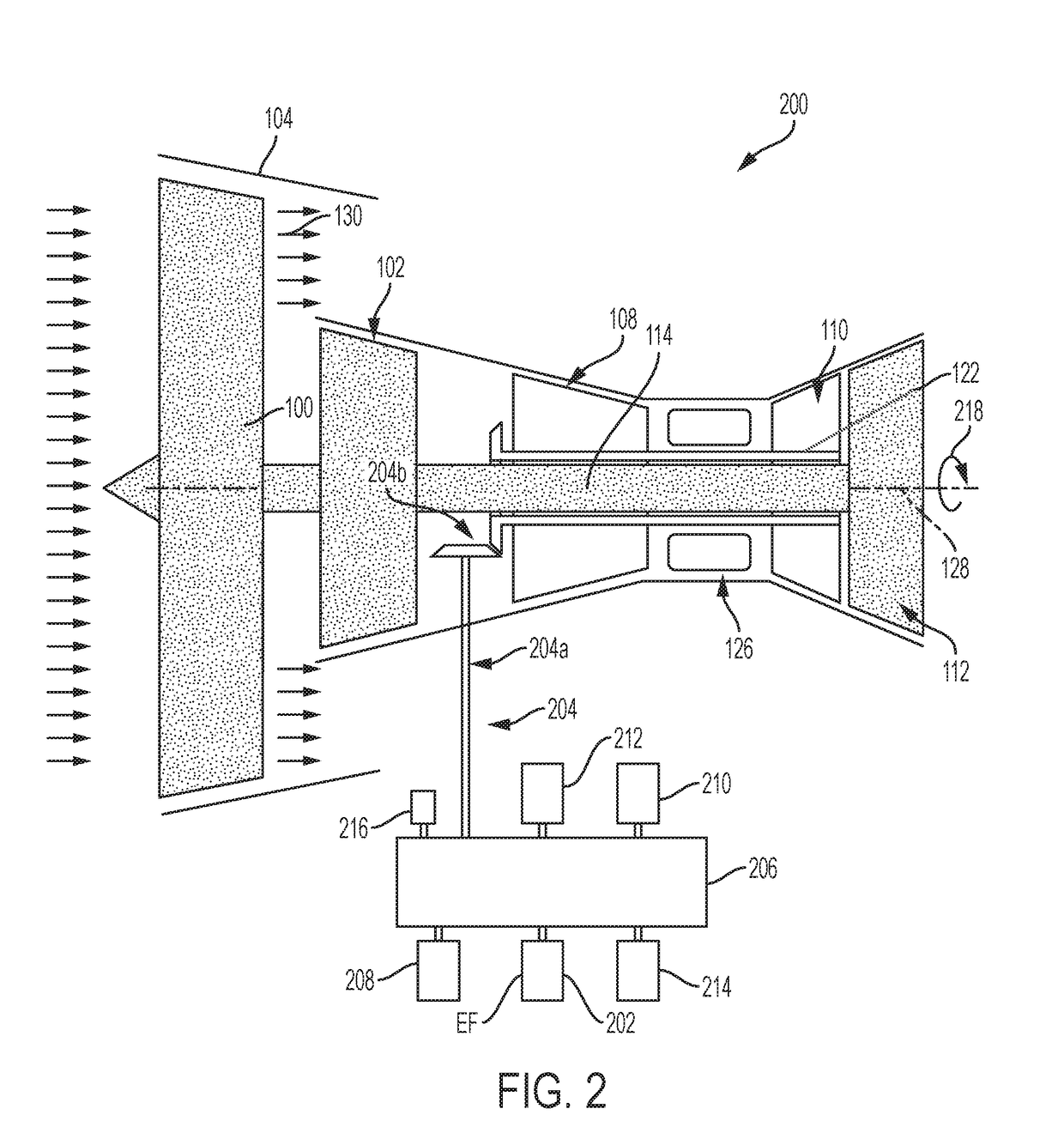Mechanical flywheel for bowed rotor mitigation
- Summary
- Abstract
- Description
- Claims
- Application Information
AI Technical Summary
Benefits of technology
Problems solved by technology
Method used
Image
Examples
Example
FIRST EXAMPLE
Gearbox Installation
[0031]FIG. 2 illustrates an apparatus or system, comprising a gas turbine engine 200 having a rotor (HP compressor 108) including a rotor shaft 122; a flywheel 202; and a first transmission 204 (comprising tower or drive shaft 204a and bevel gears 204b) connecting the rotor's shaft 122 to an accessory gearbox 206. The flywheel 202 is connected to and installed on the gearbox 206. Also shown are a generator 208, fuel pump 210, lube module 212, hydraulic pump 214, and a permanent magnet generator (PMG) 216 connected to the gearbox 206. In one embodiment, the gearbox is attached to the casing 106.
Example
SECOND EXAMPLE
Mechanical-Electrical Energy Conversion
[0032]FIG. 3A illustrates an apparatus or system, comprising a gas turbine engine 300 having a rotor (HP compressor 108) including a rotor shaft 122); a housing 302 comprising a flywheel and motor generator; a first transmission 304 (comprising tower shaft 304a and bevel gears 304b) connecting the rotor shaft 122 to the gearbox 306, and a first generator 308 connected to the gearbox 306. Also shown are fuel pump 310, lube module 312, hydraulic pump 314, and PMG 316 connected to the gearbox 306.
[0033]FIG. 3B illustrates the motor-generator in housing 302 typically comprises a second generator 318 and a first motor 320, a second transmission 322 connecting the flywheel 324 to the flywheel motor 320, and a third transmission 326 connecting the flywheel 324 to the second generator 318. An electrical connection 328 connects the flywheel motor 320 to the first generator 308 so that energy can be transferred to charge the flywheel 324. T...
Example
THIRD EXAMPLE
Load Leveling
[0043]The aircraft's electrical system 334 (e.g., powering air conditioning, cabin pressurization, and plumbing) adds various electrical loads during operation of the aircraft. Typically, some of the engine's rotational energy is converted into electrical energy in order to handle these additional loads. In this case, the engine then has to burn more fuel to maintain its original rotation speed. Consequently, the engine must be operated in such a way (i.e., with high enough speed) that it can withstand a sudden electrical load and maintain stability.
[0044]In one embodiment, the airplane extracts electrical power form the flywheel to help power the electrical systems on the aircraft at various times, e.g., during peak electrical demands. This alleviates the burden on the engine, enabling less fuel burn and lower engine speeds for most of the flight while still accommodating sudden electrical loads applied to the electrical system.
[0045]Peak electrical demand...
PUM
 Login to View More
Login to View More Abstract
Description
Claims
Application Information
 Login to View More
Login to View More - Generate Ideas
- Intellectual Property
- Life Sciences
- Materials
- Tech Scout
- Unparalleled Data Quality
- Higher Quality Content
- 60% Fewer Hallucinations
Browse by: Latest US Patents, China's latest patents, Technical Efficacy Thesaurus, Application Domain, Technology Topic, Popular Technical Reports.
© 2025 PatSnap. All rights reserved.Legal|Privacy policy|Modern Slavery Act Transparency Statement|Sitemap|About US| Contact US: help@patsnap.com



